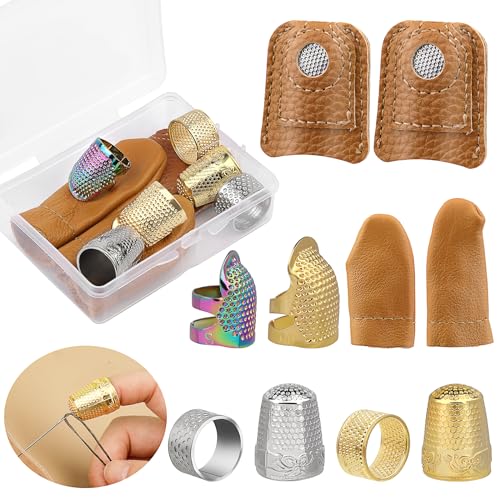Do Thimbles Come in Different Materials?
Introduction
Thimbles are small, protective devices usually worn on the finger during sewing or needlework activities. They have been used for centuries to prevent needle pricks and provide extra grip to push the needle through fabric. While thimbles have traditionally been made of metal, advancements in materials have led to the availability of thimbles in a variety of materials today. In this article, we will explore the different materials that thimbles are made of and their advantages and disadvantages.
Traditional Metal Thimbles
Metal thimbles, made of materials such as bronze, silver, or stainless steel, have been the most common type of thimbles for centuries. They are durable, provide good protection against needle pricks, and offer a solid grip. Metal thimbles are often preferred by experienced sewers and those who sew with heavier fabrics or use sharp needles. However, some people find metal thimbles uncomfortable to wear due to their weight and hardness. They can also conduct heat, so they may become hot when ironing fabric.
Modern Plastic Thimbles
Plastic thimbles are a popular choice for beginners or those who prefer a lighter and more comfortable option. They are made from various types of plastic, such as nylon or polyethylene, and are lightweight and affordable. Plastic thimbles are often adjustable, allowing for a better fit on different fingers. However, they may not provide as much protection against needle pricks as metal thimbles and may wear out more quickly with frequent use.
Leather Thimbles
Leather thimbles are another option for those looking for a softer and more flexible material. They are typically made from a combination of leather and elastic or fabric, providing a comfortable and snug fit. Leather thimbles offer good protection against needle pricks and allow for a good grip on the needle. They are often recommended for those with sensitive skin or those who prefer a more natural material. However, leather thimbles may wear out over time and may not hold up well to heavy or frequent use.
Silicone and Rubber Thimbles
Silicone and rubber thimbles are a relatively new addition to the market. They are soft, flexible, and provide a good grip on the needle. These thimbles are often designed with textured surfaces or raised dots to enhance grip and control. Silicone and rubber thimbles are generally hypoallergenic and can be a good option for those with latex allergies or sensitive skin. However, they may not offer as much protection against needle pricks as traditional metal or leather thimbles and may not fit as securely on the finger.
In conclusion, thimbles come in different materials to cater to the preferences and needs of different sewers. Metal thimbles offer durability and protection, while plastic thimbles are lightweight and affordable. Leather thimbles provide a soft and comfortable option, and silicone and rubber thimbles offer flexibility and hypoallergenic properties. The choice of material ultimately depends on personal preference, type of sewing projects, and level of experience. It is always a good idea to try different materials and styles to find the thimble that works best for you.






